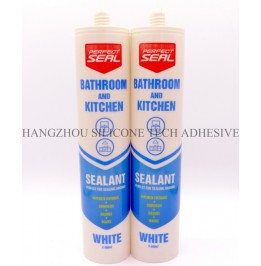When selecting a sealant for construction or industrial applications, understanding the performance variations across brands is crucial for achieving optimal results. Factors such as material composition, environmental adaptability, and application-specific requirements significantly influence the effectiveness of sealants. Below are critical aspects to evaluate when comparing different brands.

The core performance of a sealant is heavily dependent on its material formulation. High-performance sealants often incorporate advanced polymers like silicone or modified silane (MS) polymers, which offer superior adhesion and flexibility. For instance, some brands use high-purity α-cyanoacrylate esters in their formulas, enabling拉伸强度 (tensile strength) values exceeding 3.2 MPa and断裂伸长率 (elongation at break) over 500%. These properties ensure long-lasting durability, even under repeated stress or movement.
Other brands may prioritize hybrid formulations that blend polyurethane with silicone, enhancing both elasticity and chemical resistance. Such compositions are particularly effective in environments exposed to oils, solvents, or extreme temperatures. The choice of cross-linking agents and fillers also impacts curing speed and hardness, with some sealants achieving full cure within 24 hours while maintaining minimal linear shrinkage (≤1%).
Sealants must withstand diverse environmental conditions without degrading. Brands differ in their ability to resist temperature fluctuations, humidity, and UV exposure. For outdoor applications, certain sealants are engineered to tolerate temperature ranges from -100°C to +1200°C, making them suitable for high-temperature exhaust systems or arctic climates. These products often feature low-temperature flexibility, preventing brittleness in cold environments, while maintaining stability under prolonged heat.
Humidity resistance is another critical factor. Some sealants incorporate hydrophobic additives or moisture-curing technologies to prevent water infiltration, which can weaken adhesion over time. In coastal or high-humidity regions, sealants with anti-fungal properties and 0-level mold resistance (tested for 15x the standard duration) are preferable. Additionally, UV stabilizers in certain formulations protect against yellowing and cracking, extending the sealant’s lifespan in sunny climates.
Different projects demand tailored sealant properties. For structural glazing or curtain wall systems, brands offer products with ±50% displacement capacity to accommodate building movement without cracking. These sealants often undergo 10,000-hour accelerated aging tests to simulate decades of real-world exposure, ensuring minimal performance decay (≤8%).
In wet areas like bathrooms or kitchens, sealants with low volatile organic compound (VOC) emissions and food-grade certifications (e.g., FDA/NSF approval) are essential for safety and compliance. Some brands develop sealants that cure under damp conditions, enabling immediate water exposure after application. Conversely, industrial settings may require sealants with high chemical resistance to acids, alkalis, or salts, which can erode inferior products over time.
For automotive or aerospace applications, sealants must meet stringent standards for vibration damping, thermal cycling, and flame retardancy. Brands specializing in these sectors offer lightweight, non-corrosive formulations that maintain flexibility across a wide temperature range while resisting fuels and hydraulic fluids.
By carefully assessing material composition, environmental resilience, and application-specific needs, professionals can select sealants that deliver reliable, long-term performance. Prioritizing brands with rigorous testing protocols and certifications ensures compatibility with project requirements and regulatory standards.
Copyright 2019 by Hangzhou Silicone Tech Adhesive Co., Ltd. All rights reserved.
Bathroom Sealant | Acrylic Sealant | Dow Corning 795 | Aquarium Sealant | Dow Corning 732 | Clear Silicone Sealant | Polysulfide Sealant | Glazing Sealant | Mirror Sealant | IG Sealant
Powered by Onepound